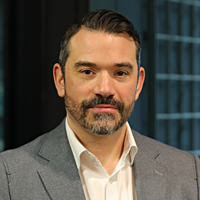Investing for the biggest market shift since the GFC
Please note: This interview was recorded on 21 March 2025.
- Name of the fund and ASX ticker: Schroder Global Equity Alpha Fund – Active ETF (ASX: ALPH)
- Asset Class: Global equities
- Investment objective: To provide capital growth in excess of the MSCI All Country World Index (NET TR) Index before fees over a three to five year period by investing in equities of companies worldwide.
- Fund page: (VIEW LINK)
Three is an important number in nature, science and storytelling. The human brain is wired to better process patterns in groups of three, the fundamental forces of nature are grouped in three and it even appears in the physics ‘three-body problem”.
You can add finance and investing to that mix, with the “three Ds” of decarbonisation, demographics and deglobalisation driving a massive shift in markets.
As Sebastian Mullins, Head of Multi-Asset and Fixed Income for Schroders Australia, explains, “All three of these point to a regime shift that we haven’t seen since the post-GFC period. During that period up to Covid 2020, we had very low volatility, very low inflation, very low interest rates.”
The markets surged in that period, and investors got used to it. Things are about to look very different and Mullins notes that this requires an active approach.
“We have come from an age of abundance to an age of scarcity, and because of that, there will be winners and losers when it comes to government policy, surviving inflation, surviving trade wars,” he says.
He notes that approaching these three themes can be helpful to identifying those winners and losers, sharing the example that you can approach decarbonisation through an energy play focused on rebuilding the grid.
One of the holdings in the portfolio is GE Vernova (NASDAQ: GEV) which is focused on the energy transition.
“Their margins are 15%, which is quite high for something like that, and they’re getting long-term contracts in places like the US,” Mullins says, noting that this is a shorter-term hold.
Mullins cautions though, that the core process of investing shouldn’t change while looking at the key themes – and to ensure success in a changing market regime.
“If we’re finding that growth gap narrows quickly, then we’re out. Or if it expands more aggressively, then we allocate more into the fund.”

Finding the growth gap
The concept of a growth gap is central to the Schroders’ investment process.
“The idea there is that often our own view of a company might have higher growth potential than what analysts are expecting. And when I say growth potential, I'm talking about earnings per share or EPS growth compared to market expectations,” Mullins says.
He puts these in two categories:
1) Core holdings
These are high quality companies with strong competitive advantages.
“All the things that make a corporate great in their field means that over the long term, they can compound that excellence to deliver higher earnings per share expectations than the market currently has,” Mullins says.
He aims for 60-70% of the portfolio to be dedicated to these and they have long-term growth opportunities.
2) Opportunistic holdings
These are shorter-term holdings where there might be a catalyst for growth, or the company has hit a temporary spate of bad news affecting the share price.
“We’re expecting the growth to catch up, or at least the analyst expectations in the market,” Mullins says, explaining that these holdings are typically only in the portfolio for around 1-1½ years.
In addition to this, the investment team will look at fundamental risk factors and assign a risk score against potential EPS growth. The size of an allocation will be determined by the risk score.
An example of a core holding is Booking.com (NASDAQ: BKNG), which Mullins notes has more than 50% of the market share of online travel services.
“We expect earnings per share growth to double over the next four years, this anticipates about a 20% better return than the market,” Mullins says.
He also sees opportunity from the diverse offerings of Booking.com, which extends to Priceline, agoda, KAYAK and OpenTable, along with the fact they are developing an AI agent to plan holidays which could be “a game changer in a market they’ve already dominated.”
Where to allocate in the current market
In the current market uncertainty, fundamentals and active management are critical. Mullins also reminds investors to ensure they are adequately diversified. For Australian investors who might typically have a home bias, this means considering global equities.
“Allocate overseas, get that diversification benefit, but also rely on an active manager to pick the best countries and the best stocks within that universe to help you smooth the process and smooth the downside if you do have a volatile event,” Mullins says.
For more detail on how to identify the growth gap, the stocks Mullins invests in and his approach to the current market, listen to the above expert interview.

1 topic
2 stocks mentioned
1 fund mentioned
1 contributor mentioned

